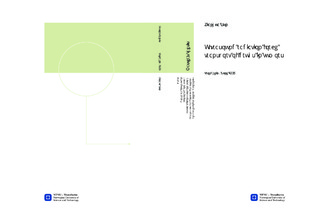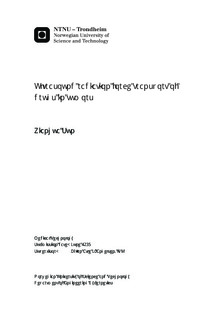| dc.description.abstract | Chemotherapy effectiveness not only depends on drug penetration extent in target tissues or tumor cells, but also depends on drug suppression extent by the normal tissues and cells. Ultrasound acts as an important role to meet this requirement in drug delivery of chemotherapy in recent years. The popular methods are micro bubbles and HIFU (high intensity focused ultrasound). In this thesis, we developed a method using ultrasound radiation force to ?push? the drug penetrate into tumor cells. The capillaries' walls in tumor are different from normal capillaries' ones. The space between cells of tumor capillary wall is quite big due to the aggressive growing. So drug can easily leak to interstitium and reach the pressure low difference besides capillaries wall. Which implicates that drug cannot travel too far from the blood vessel, only few tumor cells close to the blood vessels are exposed to the drug. Our study is addressing this issue. In our experiment, the tumor is placed at the focus of transducer and the radiation force in focus will build the bigger difference pressure besides capillaries walls and ?push? the drug from capillaries into tumor cells. But the radiation force must be controlled not too high to burn out the tumor. So in order to produce suitable radiation force or intensity in focus to improve drug transport, transducer simulation and design is the first important . In this thesis, many parameters of transducer such as center frequency, aperture size, beamwidth, depth of focus and so on are simulated. Transducer efficiency, thermal effect were measured. In the experiment, their combinational effect was applied. Ultrasonix 4DL14-5/38 probe, Sonix MDP scanner, software Forwardsim[1], hydrophone, thermal meter were used in this project. Center frequency, aperture size, beamwidth, depth of focus and ultrasound field are simulated by Forwardsim[1]. This software is quite powerful and developed mainly by Johannes Kvam and can simulate transducer ultrasound field in many aspects. Transducer efficiency was measured by hydrophone. Heating effect was measured with thermal meter and thermal camera. A final experiment conditions are decided based on the simulation and measurement results:8MHz center frequency, 14.4mm*5mm aperture size, 10 cycles pulse length, 18V input power, 10KHz PRF (pulse repeat frequency) , 10 minutes therapy time and so on(see table 4.3) . The experiment was carried on 7 mice being anesthetized and injected with drug or nanoparticles. Plastic glove filled with water was used as propagation medium. We observed tumor imaging from scanner and confirm the tumor was located in focus. Afterwards we exerted ten minutes ultrasound radiation therapy on tumor. At last tumor was excised from mice and froze in N2 liquid. The frozen sections with a thickness of 5 um were mounted on glass slide for microscopy observation. The experiment results matches very well with the simulation and measurement results. | nb_NO |

